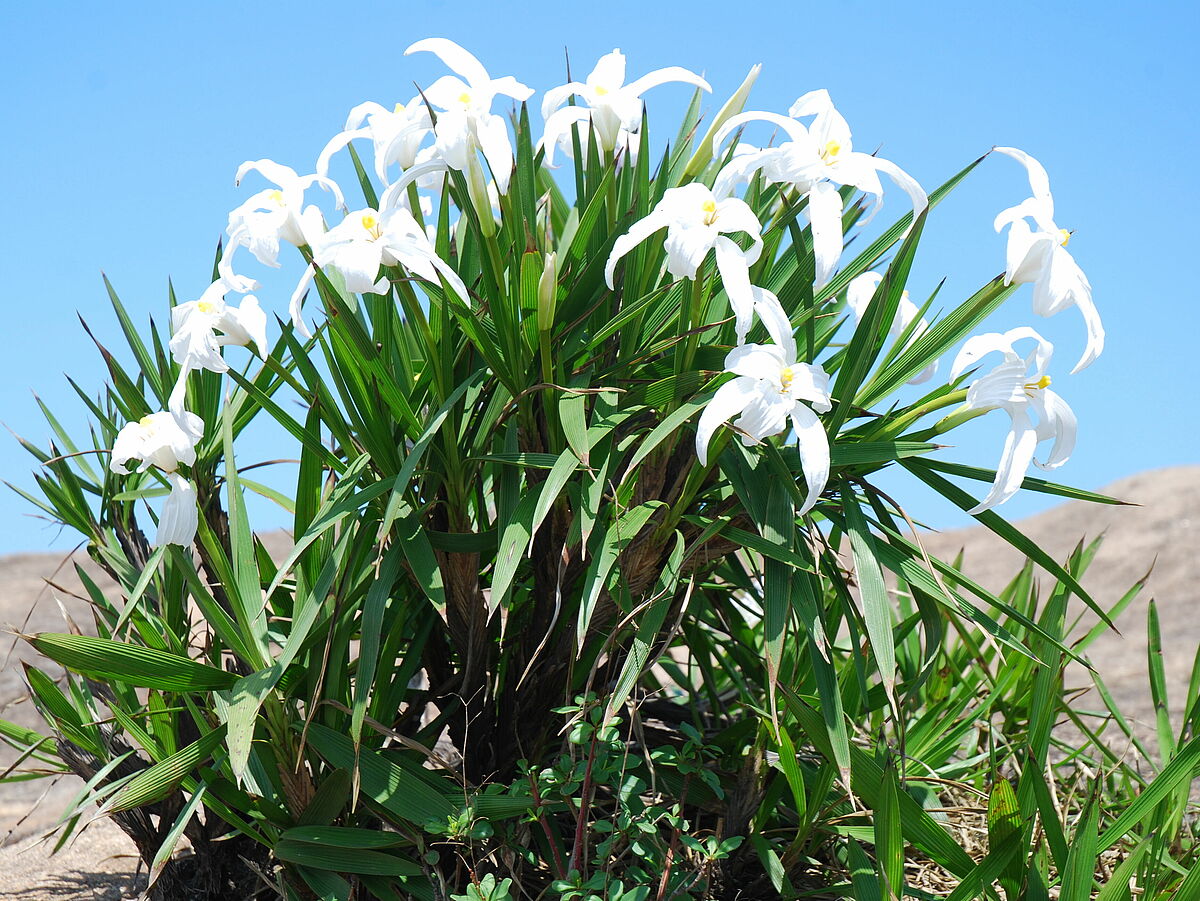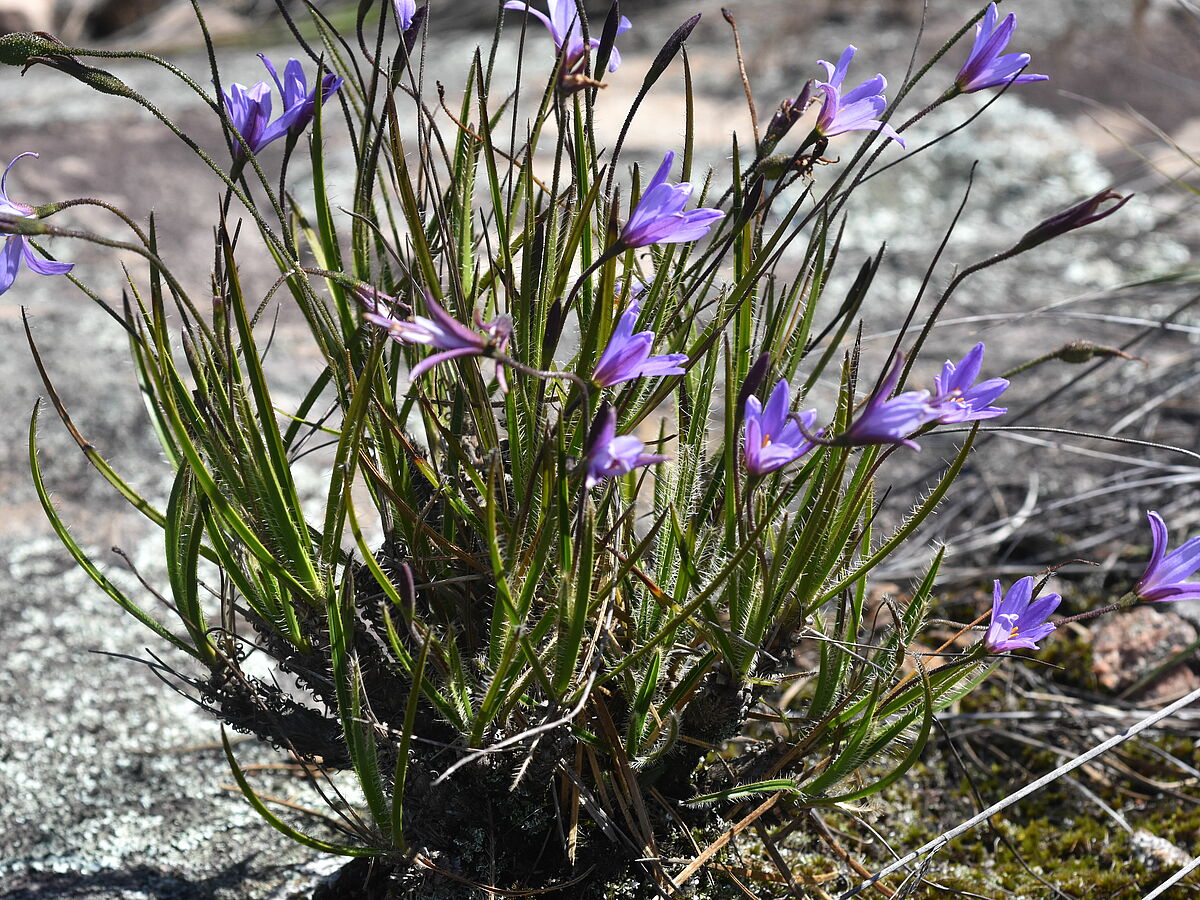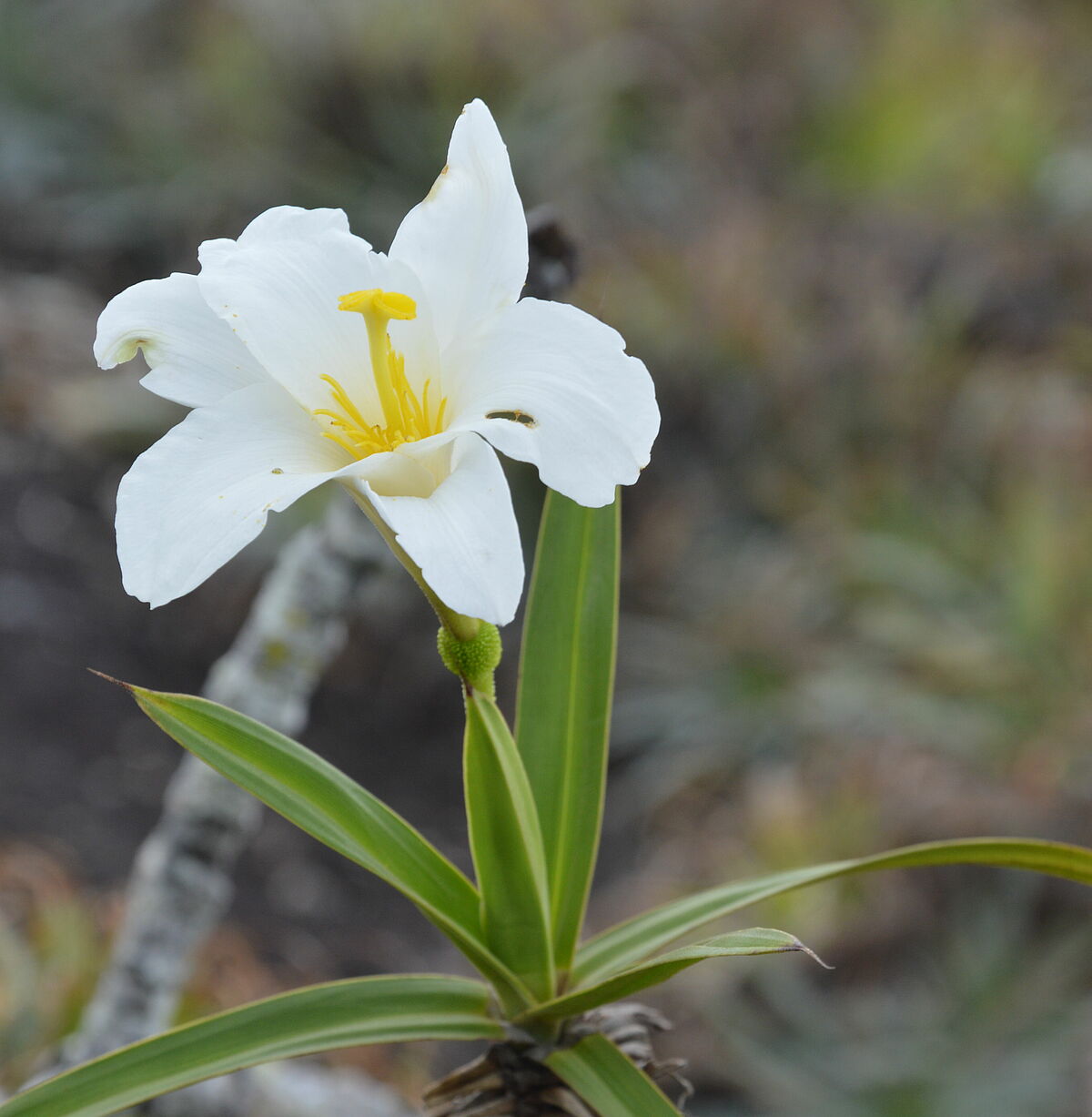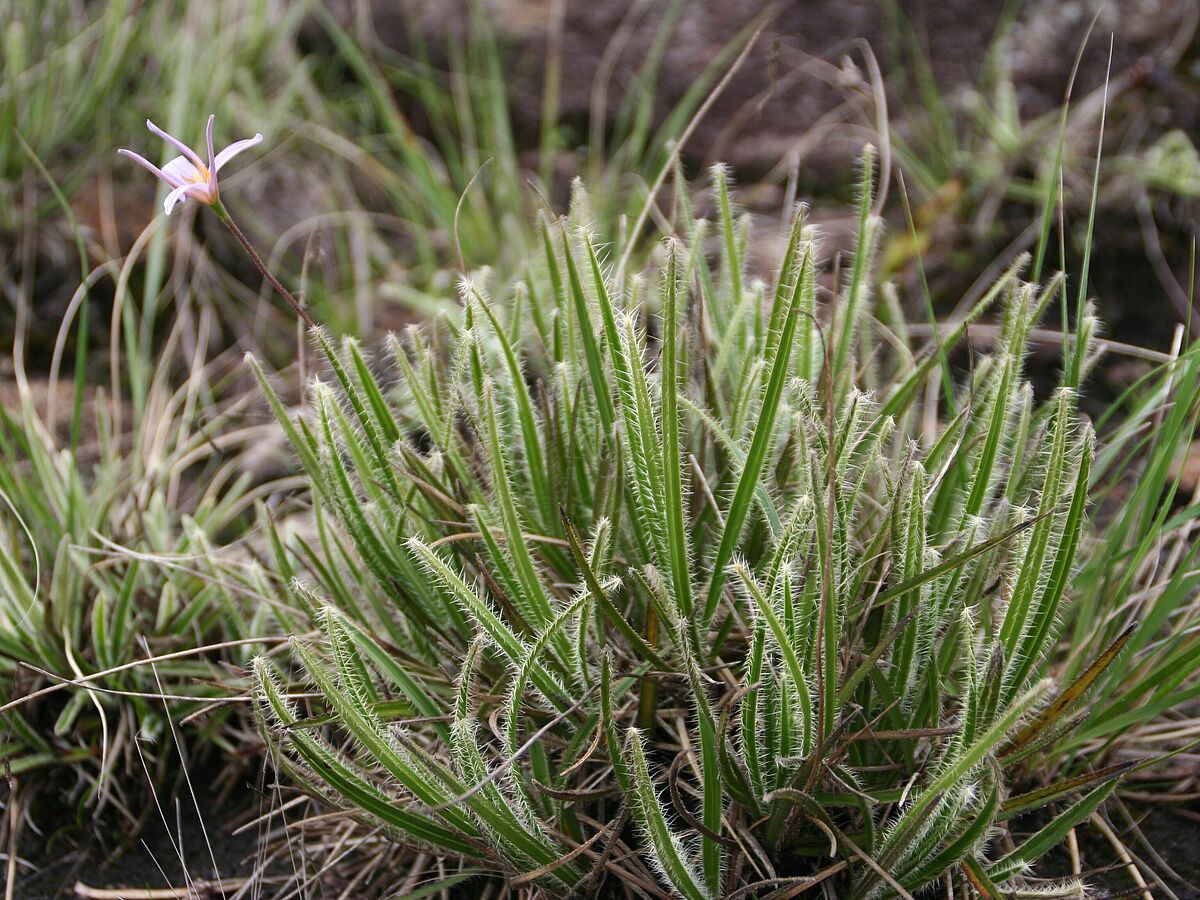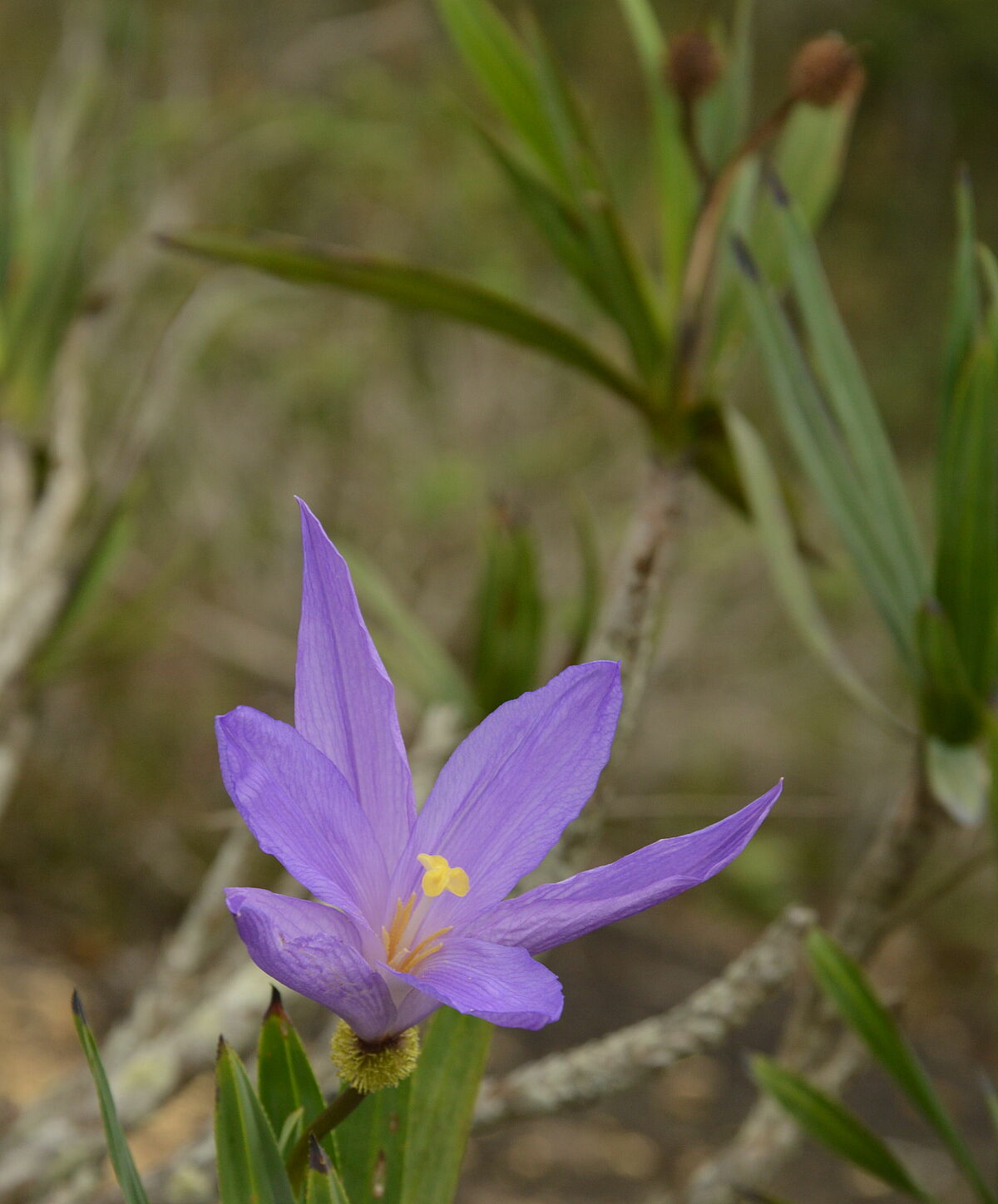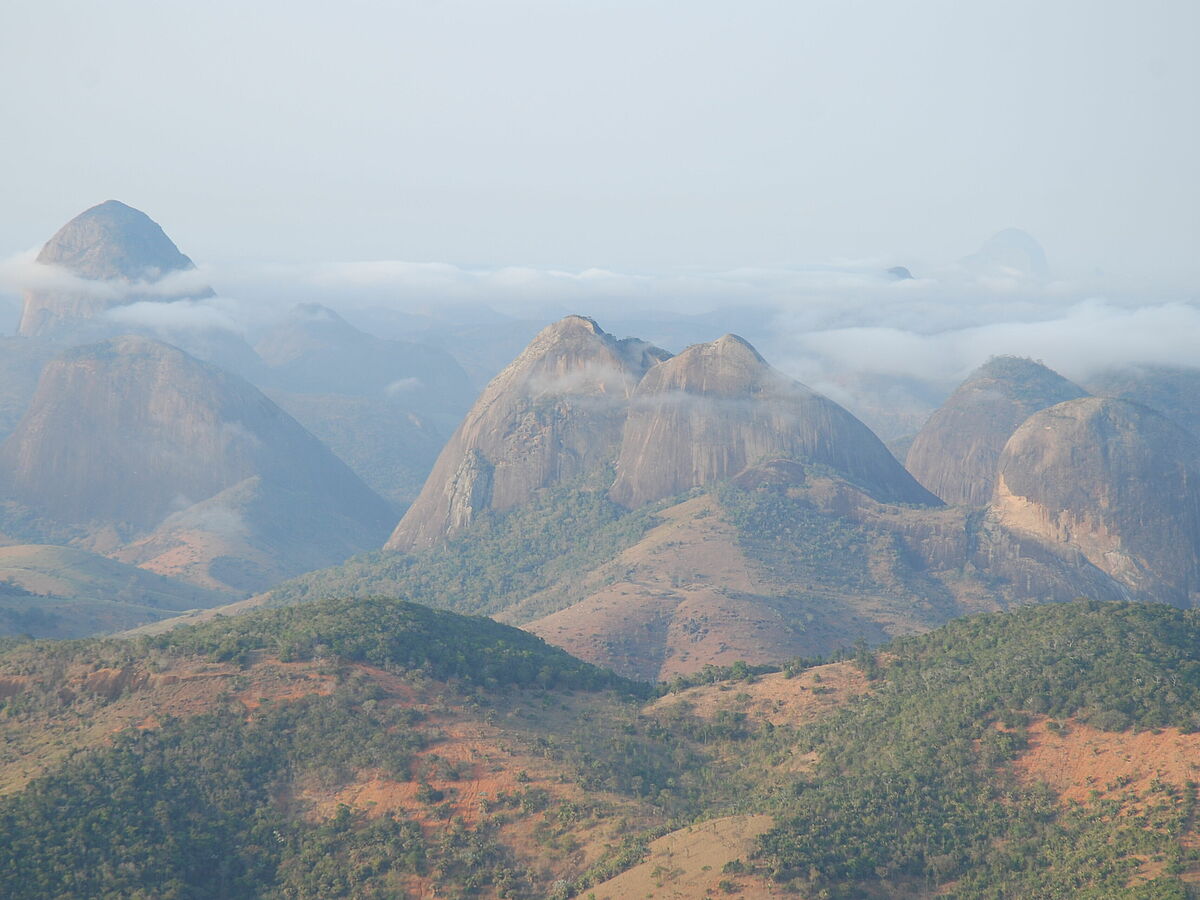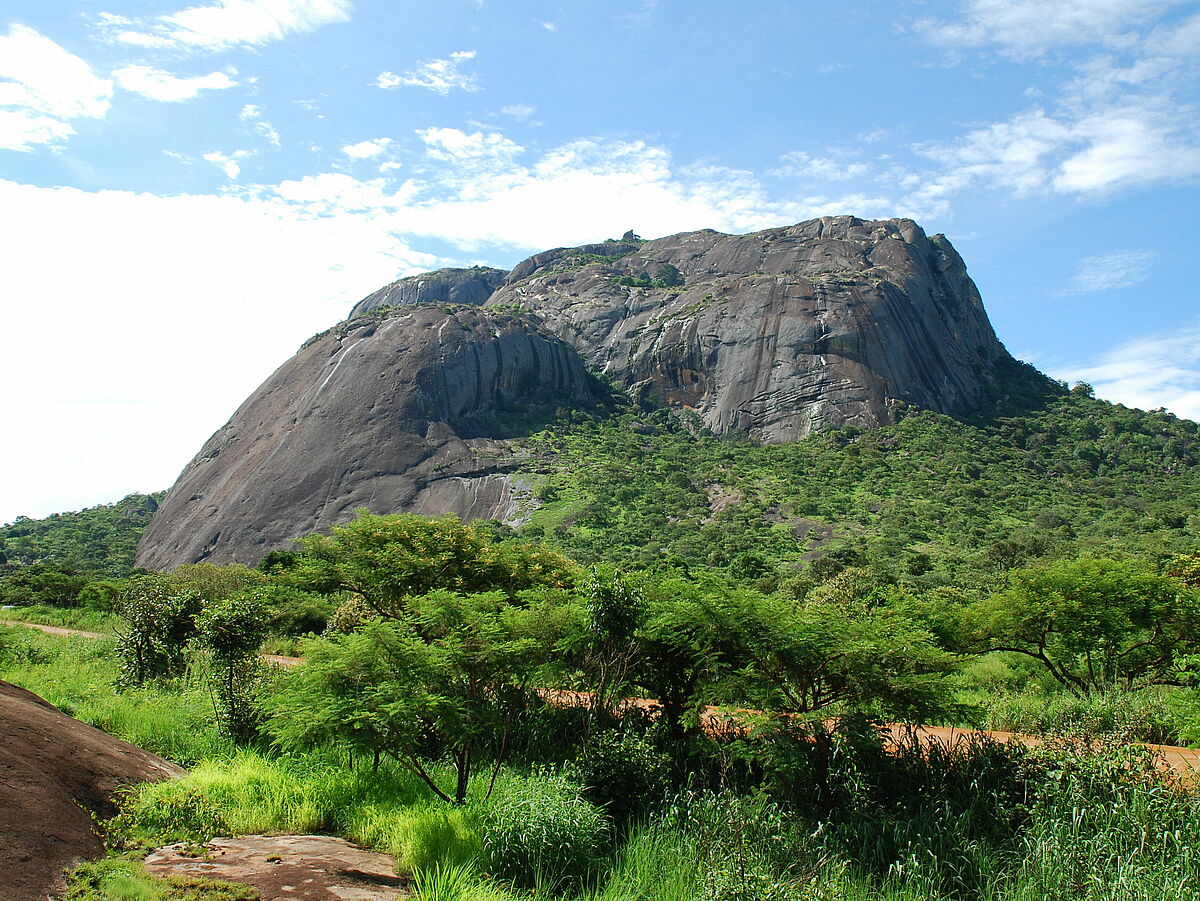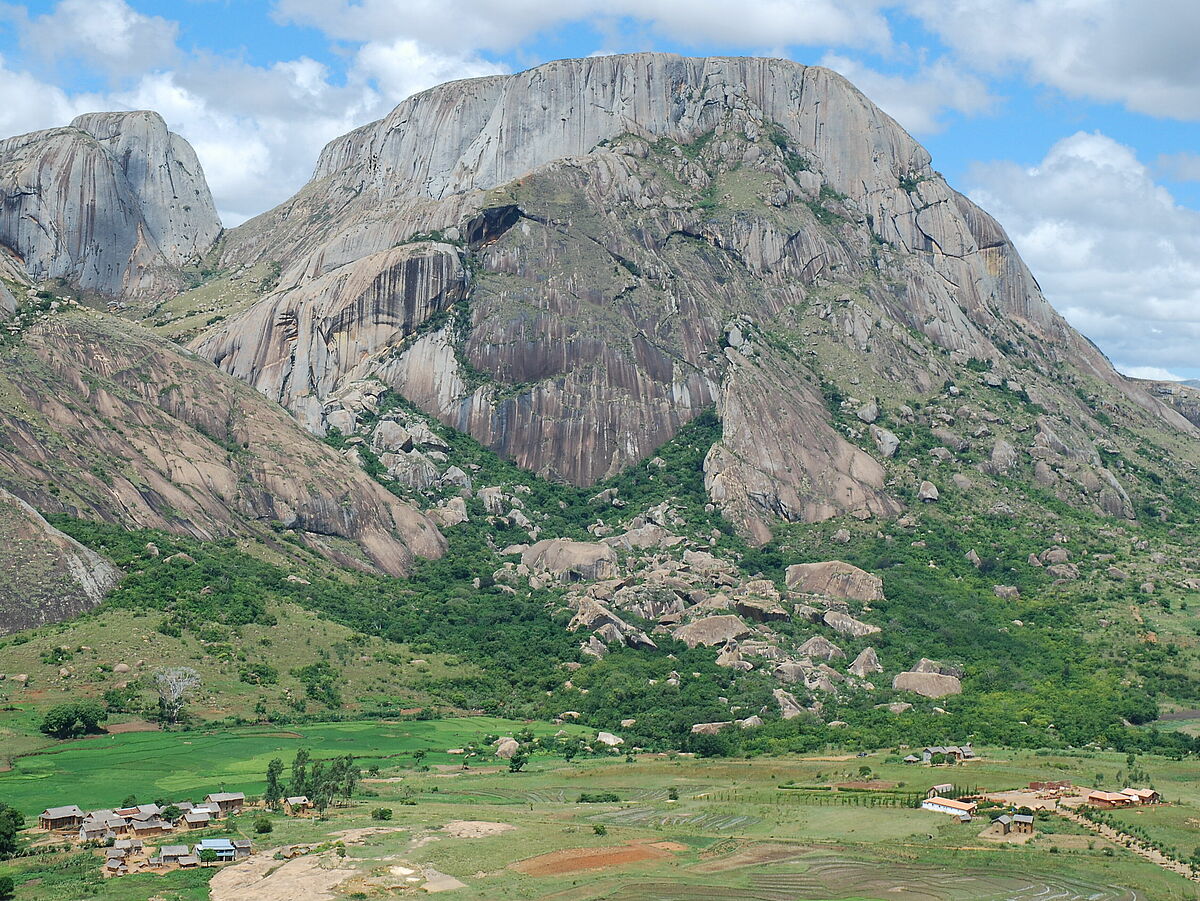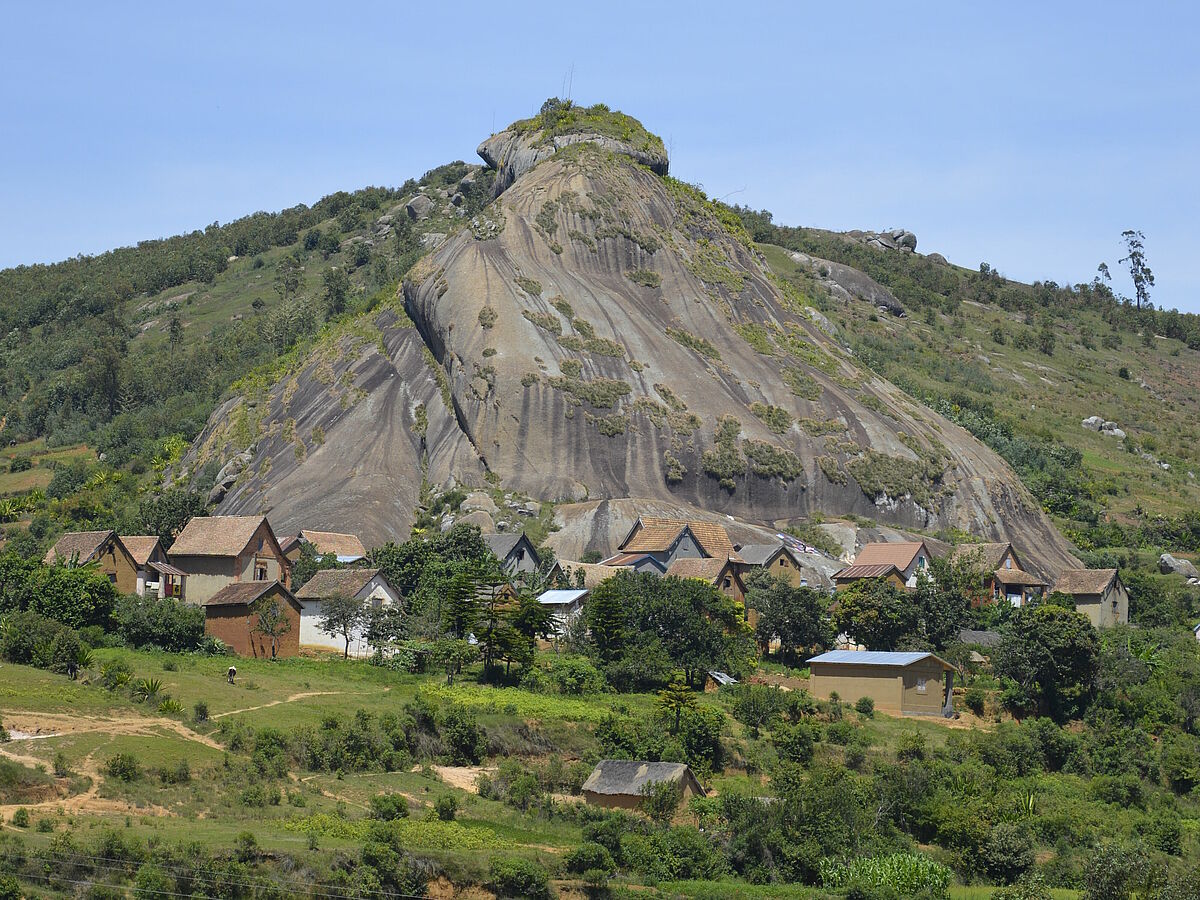Velloziaceae (Pandanales: a morphologically very heterogeneous order) is a family of Gondwanian origin that comprises c. 300 species in 5 genera (Mello-Silva et al. 2011). All members of the family occur in open, sunny habitats and have a particular affinity for rocky outcrops. The majority of species occurs in the campos rupestres in eastern Brazil. In addition, Velloziaceae are characteristic colonizers of tropical inselbergs in South America, Africa and Madagascar. Usually Velloziaceae possess woody stems and bear apically arranged leaves. Many species possess attractive and colourful flowers.
Inselbergs
Granitic and gneissic inselbergs form typical landscape elements that possess a considerable age (i.e. millions of years) and are found on crystalline continental shields. Frequently they rise abruptly from surrounding plains and consist of seemingly bare rocky slopes. Inselbergs are characterized by very harsh environmental conditions (e.g. high temperature, lack of soil) and prolonged periods of droughts. Consequently their plant cover deviates strongly from those of the surroundings. They thus can be considered to represent terrestrial habitat islands of different sizes. Their degree of isolation varies vastly between a few dozen metres up to many kilometres. Over the last decades many inselbergs have been destroyed by negative human impacts, such as quarrying, fire and grazing (Porembski et al. 2016). If this development continues, many unique and endemic species will completely disappear.

